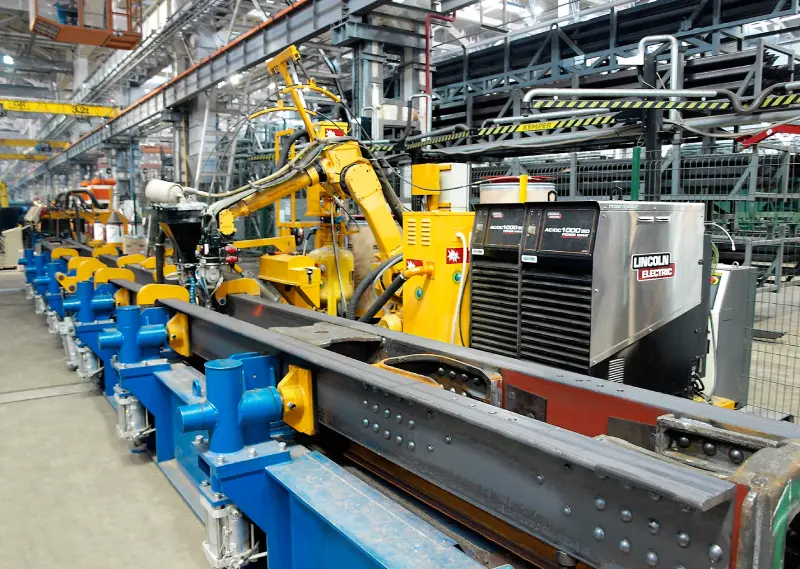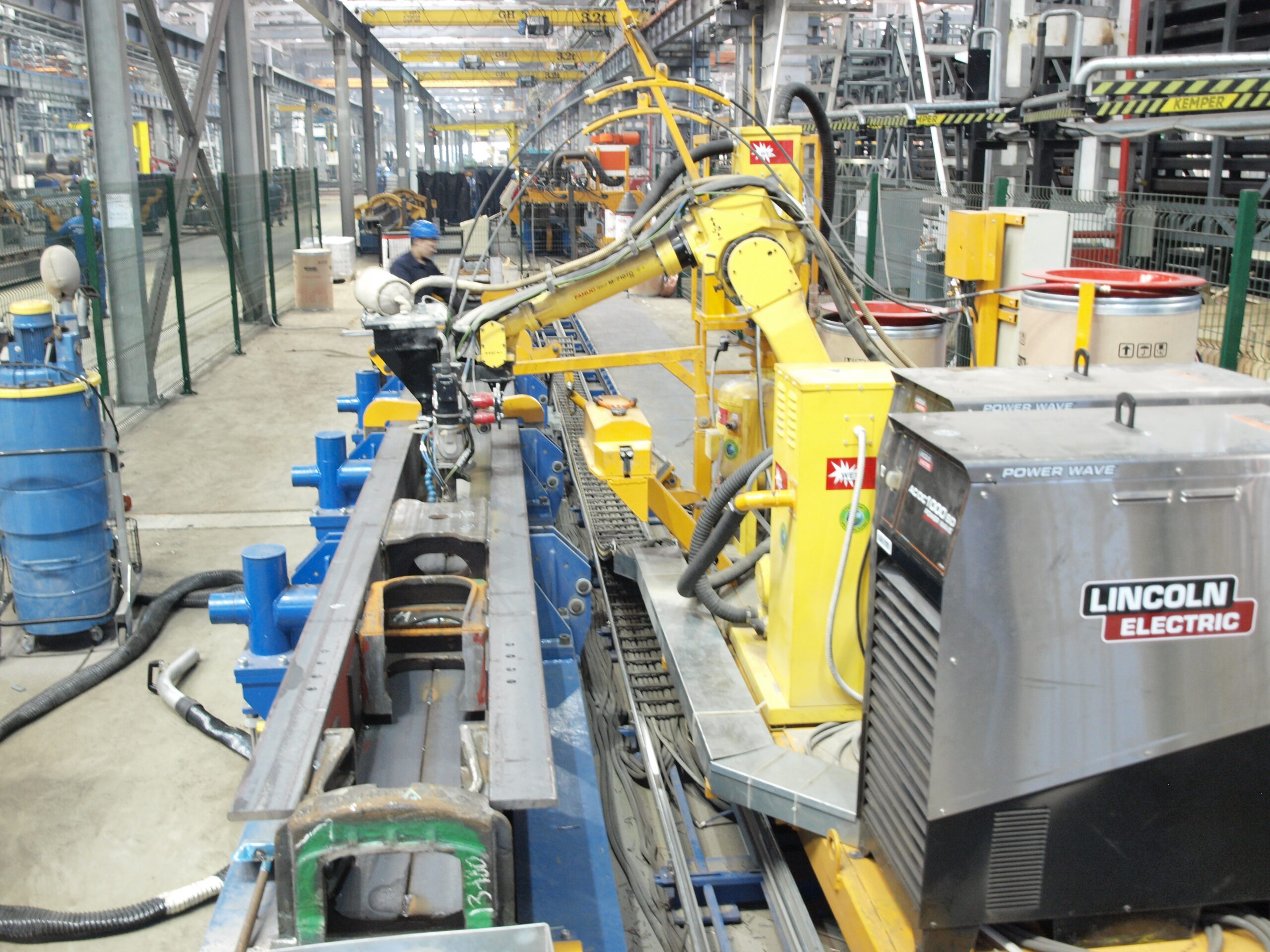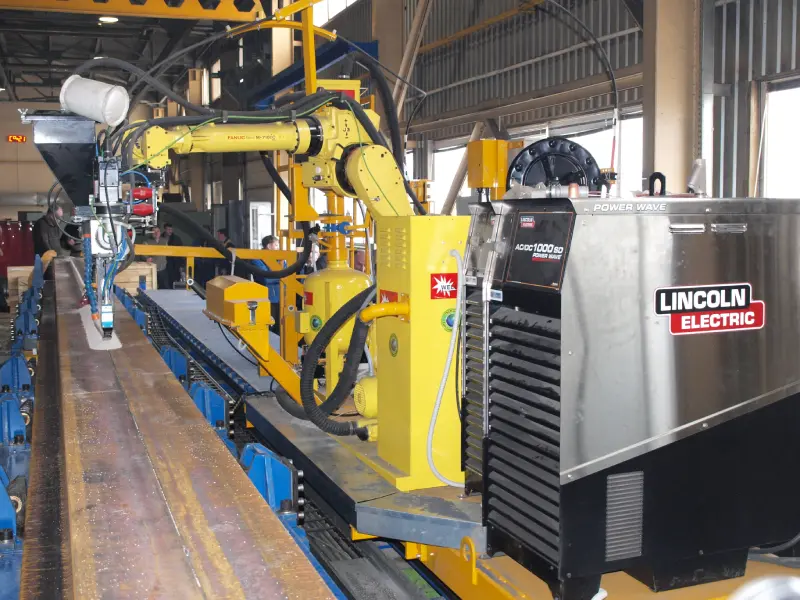Equipment name: Robotic System for Longitudinal Seam Welding of Freight Car Center Sills
Customer: JSC Tikhvin Freight Car Building Plant
Year of implementation: 2013
Productivity: up to 6 units per shift

Project Overview
Modern freight car manufacturing relies heavily on robotic welding technologies and production automation.
This robotic welding system is designed to perform high-precision longitudinal seam welding of freight car center sills, ensuring outstanding accuracy, repeatability, and reliability.
The system improves overall productivity, reduces welding cycle time, and minimizes the impact of human error.
Purpose and Advantages
The robotic welding complex is intended for submerged arc welding (SAW) of longitudinal seams on center sills for various types of freight cars.
Key advantages include:
- increased precision, repeatability, and weld joint quality.
- capability to weld in both “normal” and “inverted” positions;
- deformation prevention using a counter-bending system during welding;
- quick changeover for different product types and dimensions;
- use of an industrial Fanuc robot, programmed to bypass internal reinforcement elements;


Operating Principle
The welding system includes two working stations:
- First station – welding of center sills for hopper and box cars in the normal position.
- Second station – welding of center sills for open-top gondola cars in the inverted position.
Process sequence:
- after completion, the platform returns to its initial position, clamps are released, and the welded beam is transferred to the storage area.
- the assembled center sill is placed and securely fixed in the welding fixture;
- the structure undergoes preliminary bending compensation;
- the operator starts the automatic welding cycle via the control panel;
- the robotic welding platform moves to the start point and performs welding in automatic mode;


Control System and Monitoring
The control panel with a touch screen interface provides full management of the welding process.
System capabilities include:
- selecting the product type and welding position;
- monitoring the cycle time in real time;
- automatic tracking of completed welding cycles per shift, week, or month;
- intuitive visual interface for process stages.
Thanks to the integration of industrial automation and advanced electrical control systems, the robotic complex ensures high safety, accurate positioning, and stable weld quality throughout the entire production process.